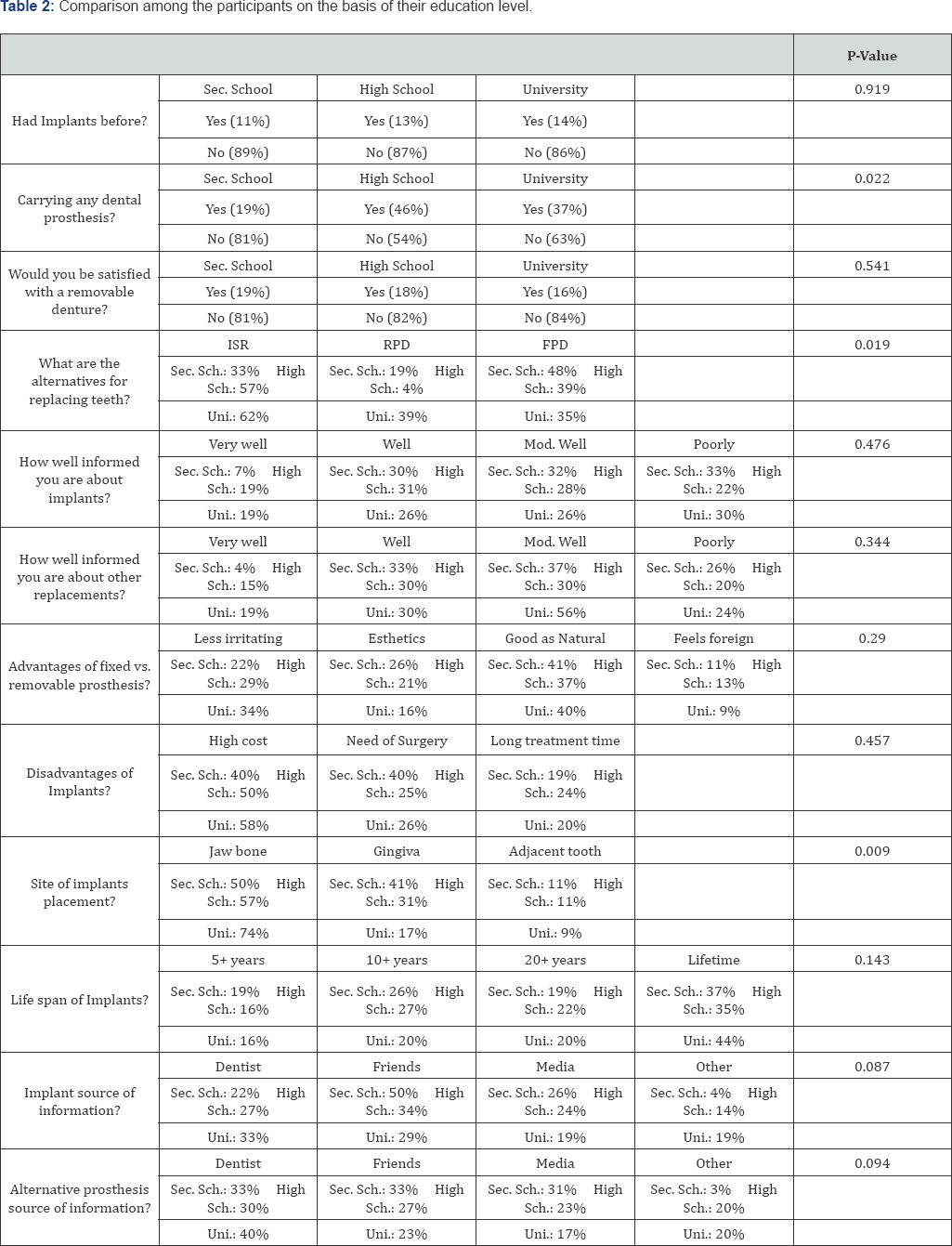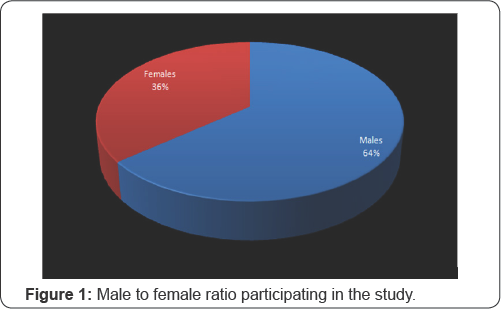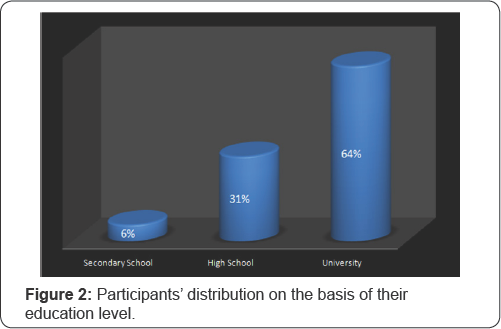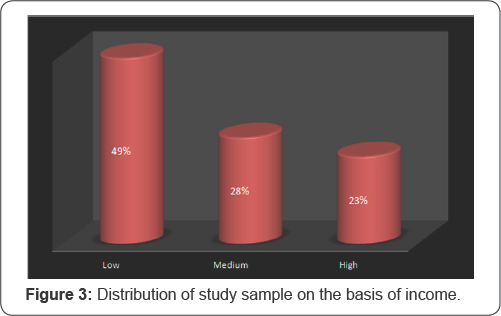Patients' Awareness and Perception towards Dental Implants: A Survey Among Out Patients Visiting Rcsdp.
Ahmed Alsanosi*, Rakan Alshareef, Abdul Rahman Almanac, Faris Alharbi, Saleh Al Anazi, Khaled Alqahtani, Jamal Al Shamary, Mohsen Aldossary, Musab Fahad and Shahzeb H Ansari
Riyadh colleges of dentistry and pharmacy, Kingdom of Saudi Arabia
Submission: November 12, 2017; Published: December 08, 2017
*Corresponding author: Ahmed Alsanosi, Level 12 dental students, Riyadh colleges of dentistry and pharmacy, P.O. Box 84891 11681 Riyadh 11681, Tel: 966112481222; Fax No.: 966112486250; Email: ahmed.a.alsnose@gmail.com
How to cite this article: Ahmed A, Rakan A, Abdul R A, Faris A, Saleh A A. Patientsí Awareness and Perception towards Dental Implants: A Survey Among Out Patients Visiting Rcsdp. Adv Dent & Oral Health: 2017; 6(5): 5556968. DOI: 10.19080/ADOH.2017.06.555698
Abstract
The objectives: To determine and identify patient's knowledge, potential barriers and to compare between gender, socio-economic status and level of education regarding dental implants.
Material and methods: This was a cross sectional study, which includes adults patients visiting the outpatient clinics in Riyadh colleges of dentistry and pharmacy (munesiyah campus). A closed ended questionnaire was formulated in both Arabic and English.
Survey included questions such as monthly income, educational level, history of implants treatment, satisfaction from other prosthesis, level of their knowledge, specific questions related to dental implants and sources of knowledge.
Results: A total of 483 patients participated in this study. Out of those, 64% were male. Large majority of patients had undergone university education (64%). 49% of the participants belonged to low income population, where as high income participants constituted 23%. Comparisons were made based on gender, level of education and socio economic status.
It was noted that females exhibited better overall knowledge compared to males as far as dental implants were concerned. It was also observed that participants having higher educational qualifications showed clear difference in the level of knowledge about implants. They had better insight about the topic.
Conclusion: Overall knowledge of participants was satisfactory. Females had much better knowledge as compared to males. High income participants had more exposure to implants therapy; therefore exhibited better knowledge. Participants having higher educational qualification had a positive effect on their overall knowledge about this topic.
Keywords: Dental implants; Patient's awareness; Dental prosthesis; Implants therapy; Fixed implants
Introduction
There are many factors related to tooth loss such as caries, trauma and periodontal conditions resulting from bone loss leading to tooth mobility; however dental caries is the most common cause for tooth loss. There are multiple options for replacing the missing teeth including fixed partial dentures, removable partial dentures and dental implants. Dental implant is the first choice for tooth replacement as it last 15 to 20 years and has a high success rate reaching 96%. Researchers reported that there is a high degree of satisfaction (above 80%) by patients with their fixed implant .Several studies have been conducted to show patients awareness about implants in different countries, however the level of awareness ranges from 23% to 79% while others reported that the high cost of implants was the main reason in preventing patients from selecting implants in 86.5 % of cases. Patients' fear of surgery was another disadvantage of implants because it has to be placed into the bone and longer treatment time in 68.6% [1].
According to the national health survey in Switzerland of 2002, 89.5% of the population between 65 and 74 years were rehabilitated with dental restorations, of those 13.1% with complete dentures. The prevalence of dental restorations increases with age and reaches 97.4% in the age group of 85 years and above. Nevertheless, the prevalence of dental implants in that representative population sample was lower than 1% in the patients with removable dentures. In Europe, the highest frequency of dental implants in the edentulous population was found in Sweden, but did still not exceed 8% [3].
The face is widely regarded as a symbol of “self” and in this, the teeth play important roles in the maintenance of a positive self-image, and loss of teeth may result in negative self-image, significant disabilities that can profoundly disrupt social activities [2].
The standpoints of the public about dental implants are less known. Some studies have been conducted to show the patients awareness about oral implants in different countries. Finland has shown that the level of awareness of implant treatment among selected groups was 29%, and best10 from Australia has shown that the awareness rate was 64%. Other surveys from Saudi Arabia and Austria reported that the patients awareness rates were 64.4% and 79, dentists dealing with implantology have met with patient's high expectations regarding optimal esthetic and function. Also media showed unrealistic reports that cause higher expectations about dental implants [4].
Aims of the study
1. To determine patient's knowledge regarding dental implants.
2. To identify potential barriers about awareness and perception toward dental implants.
3. To compare between gender, socio-economic status and level of education.
Materials and Methods

ISR: Implant supported reconstruction, RPD: Removable partial denture, FPD: Fixed partial denture

Sec. Sch.: secondary school, High Sch.: High school, Uni: University
ISR: Implant supported reconstruction, RPD: Removable partial denture, FPD: Fixed partial denture

This was a cross sectional study, which utilized male and female adult dental patients visiting the outpatient clinics in Riyadh colleges of dentistry and pharmacy (RCsDP) (munesiyah campus). A closed ended questionnaire was formulated in both Arabic and English. All adults were included in the study. The participants signed a consent form before they filled the questionnaire. Survey included questions such as monthly income, educational level, history of implants treatment, satisfaction from other prosthesis, level of their knowledge, specific questions related to dental implants and sources of knowledge (Table 1-3). These surveys were distributed using Google forms and each investigator used his i-pad to collect the data [5].
A total of 483 male and female patients took part in this study Total duration of data collection was one month. The data was analyzed using SPSS v. 16. Descriptive statistics was performed including Chi-square test with significance value kept under 0.05 [6].




A total of 483 patients participated in this study. Out of those, 64% were male. Large majority of patients had undergone university education (64%). 49% of the participants belonged to low income population, where as high income participants constituted 23% (Figure 1-4). Comparisons were made based on gender, level of education and socio economic status.
It was noted that females exhibited better overall knowledge compared to males as far as dental implants were concerned. It was also observed that participants having higher educational qualifications showed clear difference in the level of knowledge about implants. They had better insight about the topic.
Discussion
Multiple studies have been conducted throughout the globe, which focused on the same issue and determined the extent of knowledge of general public. It has to be acknowledged that the major factor in selecting dental implants as the treatment option is the high cost, which was also noted in other related studies. Another observation, which was similar to the studies done in Austria and some parts of Middle East, was the high level of knowledge showed by the females. Overall results were similar to other studies and responses were mostly affected by low income and education.
One of the limitations of our study was the small sample size, which is not the representative sample of the population of Riyadh. Since the aim was to assess the knowledge of the patients visiting RCDP clinics, this limitation could be ignored. Another issue that could affect the results is that this study was conducted in RCDP, which is a teaching dental hospital and a large majority of the patients belong to low income population.
Conclusion
Overall knowledge of participants was satisfactory. Females had much better knowledge as compared to males. High income participants had more exposure to implants therapy; therefore exhibited better knowledge. Participants having higher educational qualification had a positive effect on their overall knowledge about this topic.
References
- AlAmri R, Saker S (2017) Dental Implants Therapy: A Cross-Sectional Study of Patients' Knowledge and Awareness. British Journal of Medicine & Medical Research 19(6): 1-9.
- Muller F, Salem K, Barbezat C, Herrmann FR, Schimmel M (2012) Knowledge and attitude of elderly persons towards dental implants. Gerodontology 29(2): e914-923.
- Gbadebo OS, Lawal FB, Sulaiman AO, Ajayi DM (2014) Dental implant as an option for tooth replacement: The awareness of patients at a tertiary hospital in a developing country. Contemp Clin Dent 5(3): 302306.
- Tomruk CÖ, Kayahan ZÖ, ŞenÇift K. (2014) Patients' knowledge and awareness of dental implants in a Turkish subpopulation. J Adv Prosthodont 6(2): 133-137.
- Rustemeyer J, Bremerich A (2007) Patients' knowledge and expectations regarding dental implants: assessment by questionnaire. Int J Oral Maxillofac Surg 36(9): 814-817.
- Al-Johany S, Al-Zoman H, Juhaini M, Refeai M (2010) Dental patients' awareness and knowledge in using dental implants as an option in replacing missing teeth: A survey in Riyadh, Saudi Arabia. Saudi Dent J 22(4): 183-188.






























